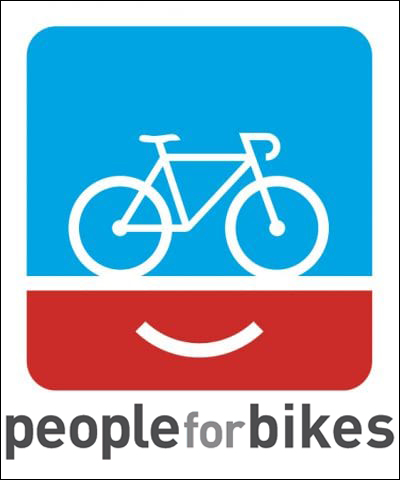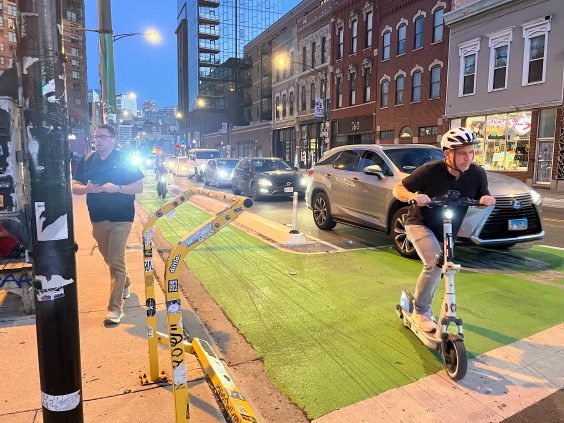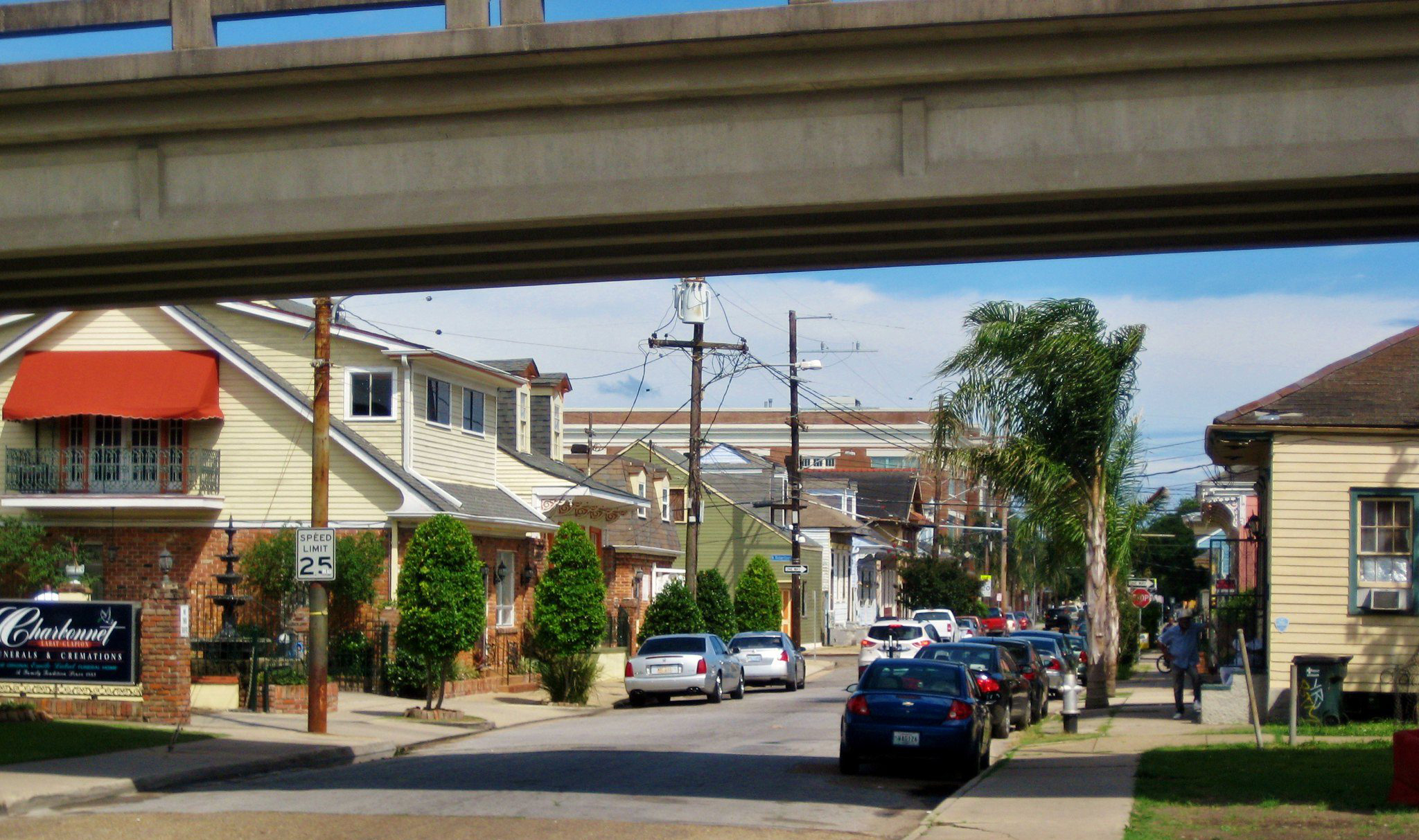Electric bicycles are under increasing scrutiny, often for the wrong reasons. In this three-part series, PeopleForBikes separates fact from fiction to protect the future of electric bikes in America, clarify what qualifies as a legal electric bicycle, and call out bad actors mislabeling high-powered motor vehicles as “e-bikes.” To read Part I, click here. To read Part II, click here.
As we’ve seen, the e-moto problem is multi-faceted and addressing it effectively will require a number of approaches from all levels of government, transportation advocates, and the media.

Let’s begin with the basics. Before deciding how to regulate e-motos, we need to carefully define what is being regulated. While e-motos are within the broad definition of “motor-driven cycles” they have some additional features that may lend themselves to a more precise legal definition of this vehicle type:
- Powered by an electric motor in excess of 750 watts
- Capable of speeds in excess of 20 miles per hour when powered solely by the motor (by use of a throttle)
- Two wheels
- A seat or saddle that is straddled by the rider
- May have either foot pegs or pedals
The e-motos of most concern are the ones that may be confused with electric bicycles and tend to have these characteristics:
- Unlike electric bicycles, the seat is a fixed “bench” seat that is not adjustable for height or pedaling efficiency
- The seat may be elongated for a passenger
- The frame is an open design to accommodate a larger battery and motor, rather than a bicycle-type frame
- Wheels are less than 24 inches in diameter and may fit tires of three inches width or more
- Weight in excess of 100 pounds
- Have electrical systems that exceed 50 volts
E-motos designed and intended for off-road use (electric dirt bikes) may have some or all of these features, but typically have footpegs rather than pedals, have robust front and rear suspension and are equipped with knobby off-road tires for traction on loose surfaces.
But what happens when existing state laws don’t quite seem to fit newer types of electric motor vehicles that are being sold and used? How should we address manufacturers who try to bypass existing legal frameworks and sell products that they claim can be configured as either an electric bicycle or an electric moped, motorcycle or dirt bike? And what do we do about e-motos that are already in use?
Increase Federal Regulation: As “motor-driven cycles,” all e-motos intended for use on public roads are subject to federal motor vehicle safety standards and their manufacturers are required by federal law to register with the agency that regulates motor vehicles, the National Highway Traffic Safety Administration. A manufacturer must also submit certain information about each model it imports and certify that the vehicle meets the standards.
While an electric dirt bike designed for off-road use is regulated by the Consumer Product Safety Commission and is not subject to federal motor vehicle safety standards, the importer must furnish U.S. Customs with a substantiating statement to establish that the vehicle was not primarily manufactured for on-road use. Motor vehicles that are designed to be used both on and off-road (dual sport) must still meet all applicable requirements for on-road motor vehicles when used on public roads.
Few e-moto manufacturers have registered with NHTSA. If they are registered, that’s a pretty good indication that they are making motor vehicles, not electric bicycles. E-moto manufacturers who avoid registration and compliance with NHTSA safety standards by claiming their e-moto is intended for off-road use, but advertise the vehicle as suitable for use on public roads or offer accessories like pedal kits, turn signals, mirrors and lights needed for road use may be violating multiple federal regulations. Federal regulators need to be encouraged to do more to police the marketplace for e-moto and other mobility devices that are motor vehicles, and federal legislation may be needed to clearly give NHTSA and the Consumer Product Safety Commission authority over these vehicles.
Modernize State Vehicle Laws: While the Federal government regulates vehicle classification and equipment requirements at the the time of import or sale, state laws regulate how vehicles may be used on public roads and lands, and how they are advertised and sold. Depending on their speed capabilities, equipment and motor power, e-motos may be classified by state laws as one of several motor vehicle types:
- Motorized bicycle (bicycle with an attached motor)
- Moped or Motor-driven cycle (low-powered motorcycle, often with pedals)
- Motorcycle
- Off-road or off-highway vehicle (OHV)
Because state law definitions were developed prior to the widespread use of electric motors, they may not always clearly encompass e-motos, allowing manufacturers to ride through the gaps or create “crossover” products. For example, Minnesota defines motorized bicycles (mopeds) by cubic inches and horsepower, rather than watts, along with the maximum speed capability of the vehicle:
"Motorized bicycle" means a bicycle that is propelled by an electric or a liquid fuel motor of a piston displacement capacity of 50 cubic centimeters or less, and a maximum of two brake horsepower, which is capable of a maximum speed of not more than 30 miles per hour on a flat surface with not more than one percent grade in any direction when the motor is engaged. Minn. Stat. 169.011, Subd. 45.
A device capable of speeds faster than 30 mph is a motorcycle, which is broadly defined as “every motor vehicle having a seat or saddle for the use of the rider and designed to travel on not more than three wheels in contact with the ground” (Minn. Stat. 169.011, Subd. 44).
So, how should states make sure their laws adequately address e-motos?
- States should follow federal law and regulate all vehicles powered by an electric motor that are capable of exceeding 20 miles per hour on motor power alone and used on roads as motor vehicles. Motor-powered speed capability over 20 miles per hour but less than 30 miles per hour, and used on public roads? Define it as moped and require a driver’s license to operate it. Speed capability over 30 miles per hour? Regulate it as a motorcycle and require a motorcycle license. Off-road electric dirt bike? Include it in the applicable off-road or off-highway vehicle definition and require registration as an off-highway vehicle.
- States should ban easily modified vehicles and devices used to modify vehicles. Selling an electric bicycle that is designed out of the box to be easily modified into an e-moto skirts motor vehicle legal definitions and safety requirements and endangers users and others. These bans should include products like dongles and apps that are used to reprogram or remove power and speed limitations.
- States should ban “crossover” products that have pedals and manufacturer settings designed to make them appear to be an electric bicycle. The Onyx RCR is an example. This e-moto has an 18,000 watt motor and a top speed of over 65 miles per hour. Onyx is a registered motorcycle manufacturer. But the RCR also has pedals and an “Eco” setting that limits its speed to 20 miles per hour. Why? So users can attempt to operate an electric motorcycle on the street without complying with motorcycle safety, registration and licensing requirements.
- States should specifically prohibit false advertising of e-motos. E-motos are being sold as “street legal” electric bicycles or e-bikes when they do not meet the Federal and state definitions of an electric bicycle. Making false or deceptive advertising claims about any consumer product is illegal, and some states (Utah, Minnesota and Connecticut) have gone further by regulating e-moto advertising and requiring truthful disclosure to consumers of the type of motor vehicle that is being sold.
- States should require that e-moto sellers advise prospective buyers of the legal vehicle definition of their product in the buyer’s state. Sellers should not pass this responsibility off to consumers by simply advising them to “consult your local laws.” In many cases the e-moto being sold isn’t legal to operate on public streets in any state.
- States should also require that e-motos meet applicable electrical and battery safety standards. While several states have adopted mandatory testing standards for electric bicycles and mobility devices and federal standards may soon be adopted, these laws do not cover e-motos which may have untested and unsafe batteries and electrical systems.
- Last, states need to enforce their existing laws and new e-moto laws against the sellers of these devices, whether they are being sold at retail in the state or online. The pipeline of deceptive and illegal e-motos needs to be shut off at the source. Sellers need to change their ways and make products that can fully comply with applicable motor vehicle laws, not leave it up to consumers to find out for themselves.
Education, Education, Education: While ignorance of the law is never an excuse (looking at you, e-moto manufacturers), we’ve just had to use a lot of words to explain the differences between electric bicycles and e-motos. This lack of understanding is leading consumers into buying “e-bikes” that are actually motor vehicles, and when children are allowed to use those e-motos the results can be tragic. Knowledge is power, and government, law enforcement, school districts and the bicycle industry are responding with new educational offerings to educate the public about these different vehicle types, the applicable laws and regulations, and safe operating practices:
- States can require bicycle and electric bicycle safety training in schools
- State motor vehicle agencies can publish informational content explaining the difference electric vehicle types and the laws that apply to their use
- Local police are creating safety training programs that can be an alternative to prosecution and turning to social media to get the word out about e-motos
- State and local advocates are helping educate the public about electric bicycles and e-motos and where they can - and cannot - be operated, and offering local hands-on training on safe riding practices
PeopleForBikes has created resources as well. We created an e-bike owner's manual with tips on safe riding and operation that our members can provide to their customers. We worked with the League of American Bicyclists to create e-bike Smart, a free online training course. And we worked with the Motorcycle Safety Foundation to create the eBike eCourse, an in-depth, comprehensive online training course.
Addressing e-motos at their source by adopting and enforcing innovative laws and educating the public about electric bicycles and e-motos will help us fix the “E-moto Problem.” When properly regulated as the motor vehicles they are and limited to properly licensed adult users, e-motos can find their place on public streets and in off-road vehicle areas.






